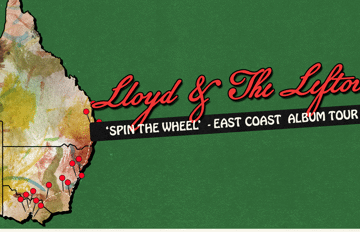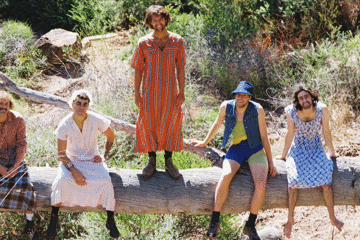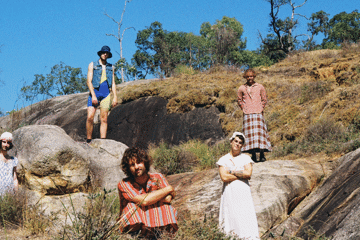Why Australia Seems 'Strange And Magical And Off-Kilter'
"I want to live in that space of mystery, which means you don't answer questions definitively, which feels more like life, doesn't it?"

Let's say, for argument's sake, that you were telling a story where 2% of the planet's population suddenly and mysteriously vanished from the face of the earth. There's a school of thought that automatically thinks the story would subsequently revolve around two questions: Why did these people disappear? And where did they go?
Damon Lindelof, perhaps best-known as the co-creator of the hit TV series Lost, knew he wasn't going to ever address those questions when he started developing his television adaptation of Tom Perrotta's novel The Leftovers, a story in which, uh, 2% of the world's population has suddenly and mysteriously vanished from the face of the earth. Although he acknowledges with a laugh that his show would probably attract a larger audience if it did.
Instead, as its title indicates, The Leftovers focuses on the people remaining behind, people grieving the loss of missing loved ones and unable to explain what this miraculous, mysterious event says about — well, everything from the possible existence of a higher power to their own place in the greater scheme of things.
"A big part of it is, 'What is the culture of the place and the people?', because that translates to the work ethic of the crew you hire and this delicate balance of having fun while you work but also dealing with people who are very exacting in their craft."
"The thing that activates me most in storytelling, and the thing that bites me in the ass the most, is mystery," says Lindelof. "What makes mysteries so great to me is... well, take someone who has been convicted of murder and claims to be innocent. Are they innocent or not? That to me is much more compelling than, 'Nope, they're guilty'. I want to live in that space of mystery, which means you don't answer questions definitively, which feels more like life, doesn't it?"
Don't miss a beat with our FREE daily newsletter
Leftovers lead actor Justin Theroux, who plays small-town police chief Kevin Garvey, echoes Lindelof's sentiments. "People say it's so weird and that they don't get it," he says. "What I love about the show is that it mimics your life more than you may think. It's completely universal to think, 'What's the point of life? What's the purpose of grinding on?' — Damon has shone a light on that in a way that is at times uncomfortable. Most people are happy to go through life not thinking about too much, not examining what's underneath the surface. But everyone has an existential moment at some stage in their life."
For the third and final season of The Leftovers, Lindelof has brought the cast and crew of the show to Australia, a development hinted at during the previous season when it was revealed that Garvey's father, played by Scott Glenn, had travelled here in search of answers. "He's been wandering the continent, and his journeys culminate in the Melbourne area at around the same time the rest of the show is basically colliding with him," says Lindelof.
Neither series creator nor lead actor were too forthcoming with details about how the Australian locale would affect this final chapter of the story or what would happen to the characters in the last eight episodes of season three. However, Lindelof was quick to praise the local crews working on The Leftovers. "Yeah, my experience so far has been that it is awesome," he says of Australia. "Being a producer of television and film for 15 years now, a big part of it is, 'What is the culture of the place and the people?', because that translates to the work ethic of the crew you hire and this delicate balance of having fun while you work but also dealing with people who are very exacting in their craft. We've gravitated towards places - Austin, Texas in season two, and now here - where the work ethic is incredible but it's also a lot of fun working together. There's something in Australia that's very organic when it comes to that."
Rather than construct sets, the show is primarily taking advantage of actual locations around Australia, with Victorian spots ranging from Federation Square in the Melbourne CBD to the You Yangs mountain range just outside Geelong being used during the shoot.
Shifting from one location to another between the first and second seasons of The Leftovers gave Lindelof the opportunity to broaden the show's visual palette and open up the story more. And a little research into Australian cinema of the 1970s, especially Peter Weir's Picnic At Hanging Rock and The Last Wave, help set the tone for the new episodes, which will be filmed over the next couple of months.
"There's something about the way those two movies feel - they're kind of supernatural movies but nothing overtly supernatural happens in them," says Lindelof. "Why is that, we wondered, and the answer started leading us towards Australia - there's something strange and magical and off-kilter without taking itself too seriously here. Then we watched [films set in Australia like] Wake In Fright and Walkabout and we thought, 'Let's stop ripping off these movies and just go!'. The gravity of the story was sort of pulling us here."
Related Gigs











